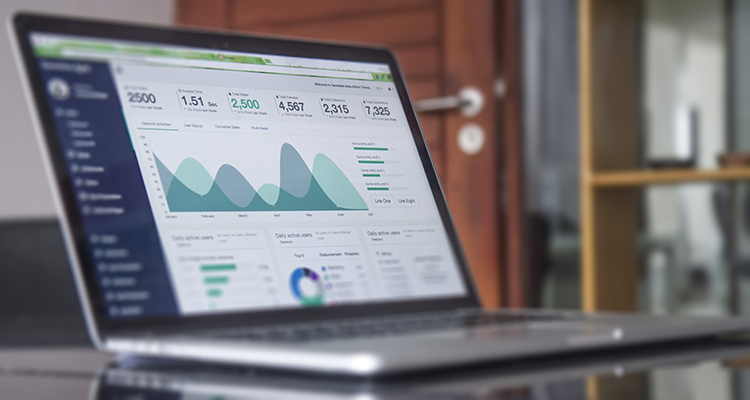Content marketing has been around a long while now. Some say that Ben Franklin himself was the progenitor of content marketing when he published Poor Richard’s almanac in 1732 (Source: Content Marketing Institute).
The idea probably goes back even further but what’s more interesting in the road immediately ahead of us. Coming up fast like a sharp left turn at a cliff, is the mainstreaming of AI in everyday life.
Machine-learning will play a role in nearly every aspect of life that is influenced by software. When you see an ad it will be AI sifting through your data to serve you a personalized experience. When you read an article it will have been researched, written, and optimized with the help of AI.
Marketing has been a battleground for technology over the last decade or so. Marketing teams have had to adapt to a digital customer in an increasingly global world and as a result have become more and more reliant on automation technology to achieve scale.
Content marketing and artificial intelligence have both matured to a point where they’re ready to take a mutual interest in one another. And there are already enough AI-driven content marketing solutions that we can begin to get a feel for how this shift is going to revolutionize the industry.
In this post we’ll discuss 5 ways that AI is changing content marketing (for the better):
1. Content Discovery
Brainstorming new content ideas is hard work and the process that most of us have used to date has been draining, time-consuming, and frankly, inefficient.
But there’s a better way…
We’ve always assumed that the best way to come up with content is by collaborating with a whiteboard or sticky notes, throwing out ideas and just seeing what sticks.
Journalists are ahead of the curve compared to content marketers because they’re always been looking for the real story by mining a topic for emergent trends and divergent ideas.
An editorial focus on timeliness and relevance yields content that people A) you can’t find easily elsewhere, and B) can update as the story unfolds, holding people’s attention longer and making them come back for more.
The trick is being able to spot a story as it’s developing and then being able to produce content while the story is gaining steam but before it’s been addressed by your competitors.
Identifying and monitoring these opportunities is a process called “Content Discovery”. AI-powered research tools have the potential to go far beyond the capabilities of Google Alerts, Google News, or Cision, and similar platforms.
Natural language processing provides machine learning algorithms the tools to digest any data which can be represented in text, which now also includes many multimedia types of content thanks to Google transcribing YouTube videos, podcasts, and other formats.
This means that we can easily index the world’s content, parse it into entities (terms), discover relationships and meanings, and assess the similarities and differences.
We can analyze social networks engagements for any piece of content on the Internet, across the entire history of social media. From this method emerges a reliable means to measure content performance based on who’s reading, sharing, and engaging the content.
Content that is clicked on, liked, commented on, shared, or otherwise engaged with by an audience of a meaningful size can be digested, analyzed, and used to inspire and inform your own content efforts.
And imagine that all of this research is essentially effortless, with algorithms doing searching, processing, analyzing, summarizing, and provides you with recommendations on next steps.
A “robot buddy” is a powerful thing for a content marketer to possess, when so much of our time is spent researching, editing, promoting, and analyzing our content. Writing is often a relatively minor part of the job compared to the efforts leading up to and following actually producing content.
AI could be identifying potential trends that need to be covered or divergent ideas that present creative new possibilities. Social networks can be monitored and mined algorithmically for relevant customer insights which can inform content strategy and identify content opportunities.

2. Predictive Analytics
AI’s uncanny ability to process incredible amounts of data at high speed and efficiency opens the door to a world of new possibilities in predictive analytics.
Wikipedia defines predictive analytics as encompassing a variety of statistical techniques from data mining, predictive modelling, and machine learning, that analyze current and historical facts to make predictions about future or otherwise unknown events.
In simple terms this means that machine-learning algorithms, if provided with enough data, can predict which potential outcomes in a given scenario will be most likely to occur.
This is accomplished by identifying common data points and patterns of activity which, historically, tend to result in predictable outcomes and then applying that logic to future scenarios and making assumptions based on what data is and isn’t available at the time.
When applied at scale, predictive analytics literally takes the guesswork out of forecasting future outcomes, so that data scientists / statisticians can make actionable projections without personal bias casting a shadow on their interpretations.
Important applications for AI platforms in content marketing include use cases like predicting content performance, modeling the results of potential optimizations (before implementing solutions), identifying popular topics and trends, and identifying which influencers are likely to engage with and share your content.
AI learns as it works, evolving predictive algorithms over time. As it encounters dissonant situations the algorithm updates itself and thus results, recommendations, etc. improve over time as well.
3. Content Promotion
84% of C-level and VP-level buyers are influenced by social media when purchasing according to IDG. (Source: ArticulateMarketing)
Clearly there is value for B2B marketers in promoting content on social media, who spent a large portion of their time (and marketing budget) trying to penetrate to the C-level in the prospect organizations.
The problem is that B2B marketers struggle to find valuable prospects through social media. It’s a fantastic channel for marketers with a story to tell…but you have to bring your own first-party data to the party.
49% of B2B marketers consider [social media] the hardest tactic to generate leads from.
It’s not for lack of trying…B2B marketers are almost universally investing into social media, including advertising on social networks. Roughly 65% of B2B marketers use Facebook ads.
And it’s working to some degree, with 65% of B2B marketers claiming they’ve acquired leads through social channels.

So why are marketers complaining about the challenges of working with these platforms?
The average cost-per-click for B2B Facebook ads in 2019 is $2.52. At the industry benchmark conversion rate of 1%, it will take 100 web site visits to generate 1 lead. A $252 cost per lead is cost prohibitive for many enterprises, especially those with a lower cost subscription model.
A few years ago B2B marketers could realistically rely on Facebook ads as a major traffic driver of profitable revenue but the profit margin is quickly eroding at that level of investment.
To make things more complicated, after Mark Zuckerberg (CEO of Facebook) appeared before Congress in early 2018, Facebook responded to criticisms by eliminating over 10,000 ad targeting options.
So it’s not just rising costs that’s causing issues, but the lack of the requisite targeting criteria like job title, industry, college degree, and other personally identifiable information makes it virtually impossible to reach new B2B audiences.
By contrast, marketers that can supply Facebook with custom audiences (email lists, customer data, etc) typically see significant improvements in their social campaign ROI.
This is a great strategy for reinforcing your brand with prospects that have already interacted with your business, but won’t help you find new prospects for your lead funnel.
This is where AI comes in…
Audience management platforms are a growing segment of digital advertising platforms as a result of the increasing challenges B2B advertisers face in wake of Facebook facing criticisms for its handling user data.
Platforms like AdExt, LightningAI, Kenshoo, and MarketChorus, each attempt to address the challenge of discovering engaged audiences in by leveraging machine learning in different ways.
Some platforms integrate data sources like Google Analytics, your search ad campaigns, or third-party data providers to discover relevant audiences on social networks. Others rely on the same Facebook Insights you’re accustomed to, but leverage AI to optimize your campaigns over time.
MarketChorus leverages APIs to connect directly with Facebook, Twitter, and YouTube, and adds custom audiences directly in your advertising accounts, based on how interested each user is in your content (and similar content we match out on the web).
On Twitter we create lists of people who’ve engaged with your articles, or similar articles from your competitors, including shares, clicks, likes, comments, etc. For even more refined audiences, you can further filter by accounts that have consumed multiple relevant articles.
We take a different approach on Facebook, using natural language processing to digest relevant articles and mapping them to longtail Facebook Interests.
Popular (and obvious) Interests are easily discoverable using Facebook’s ad manager and will be targeted by many other advertisers, driving up your advertising costs. But MarketChorus maps dozens, or even hundreds, of far less obvious Interests that other advertisers are ignoring.
With this longtail approach MarketChorus is able to target highly-relevant audiences at much reduced rates, which increases CTR while significantly lowering per click and per lead costs.

4. Performance Analysis
AI is best suited for repetitive tasks that require a lot of time and calculation to process efficiently. Human workers can reproduce most of these tasks manually, but the time and effort involved is cost-prohibitive.
Until the introduction of AI into the mainstream, businesses might recognize the value of such activities but would have had to let those opportunities go as a matter of practicality. Now, with a nearly infinite amount of processing power available within “the cloud”, tools are being developed to monitor and analyze previously impossible amounts of business intelligence.
Content performance analysis is one of the areas where these new capabilities will begin to impact content marketers in the near term. Imagine being able to instantly calculate not only the number of social media views your content receives on Twitter, but the number of shares by accounts that have also shared your competitors’ content within the last 30 days.
Producing the results of such a query would require querying the Twitter API for an initial list of engaged accounts and then requerying multiple times for every account in that initial list. If you’re a big brand with hundreds or thousands of engaged readers, this quickly becomes a mountain of data to sift through and analyze.
That amount of data is infeasible for any human worker to manage and would have taken a traditional piece of software hours to process.
AI can process all this data, and perform many complex calculations on it, in much less time than it takes the user’s browser to render the results on their screen.
Tools like Acoustic, Knotch, and even Google Analytics leverage machine-learning in a variety of ways to mine volumes of data for small details that yield important insights.
The lines between performance and predictive analytics are blurry, since one process informs the other, but one thing is clear: the data we generate today will provide the insights to improve tomorrow.
Final thoughts…
As the world around us becomes more intelligent our tasks will take less time, require less effort, and yield results on a larger scale. It’s inevitable, but it’s also necessary.
The world is getting smaller but there are a lot more people in it than ever before. That’s more opportunity, more responsibility, and well…just more work to do.
We’ll need our robot friends to help us bear the load. Marketing teams are almost universally understaffed for the volume of activities they’re asked to manage. The automation of the future will have us outsourcing less because the software will be able to do more.
It’s probably time to embrace the change and to look at this new AI revolution as an opportunity to do much, much more with the time we’re given.
We obviously believe in the promise of AI here at At MarketChorus but we’re also big believers in the promise of humanity. A machine-enabled future for humanity is extremely exciting and we’re ready to be a part of it.
Are you?


